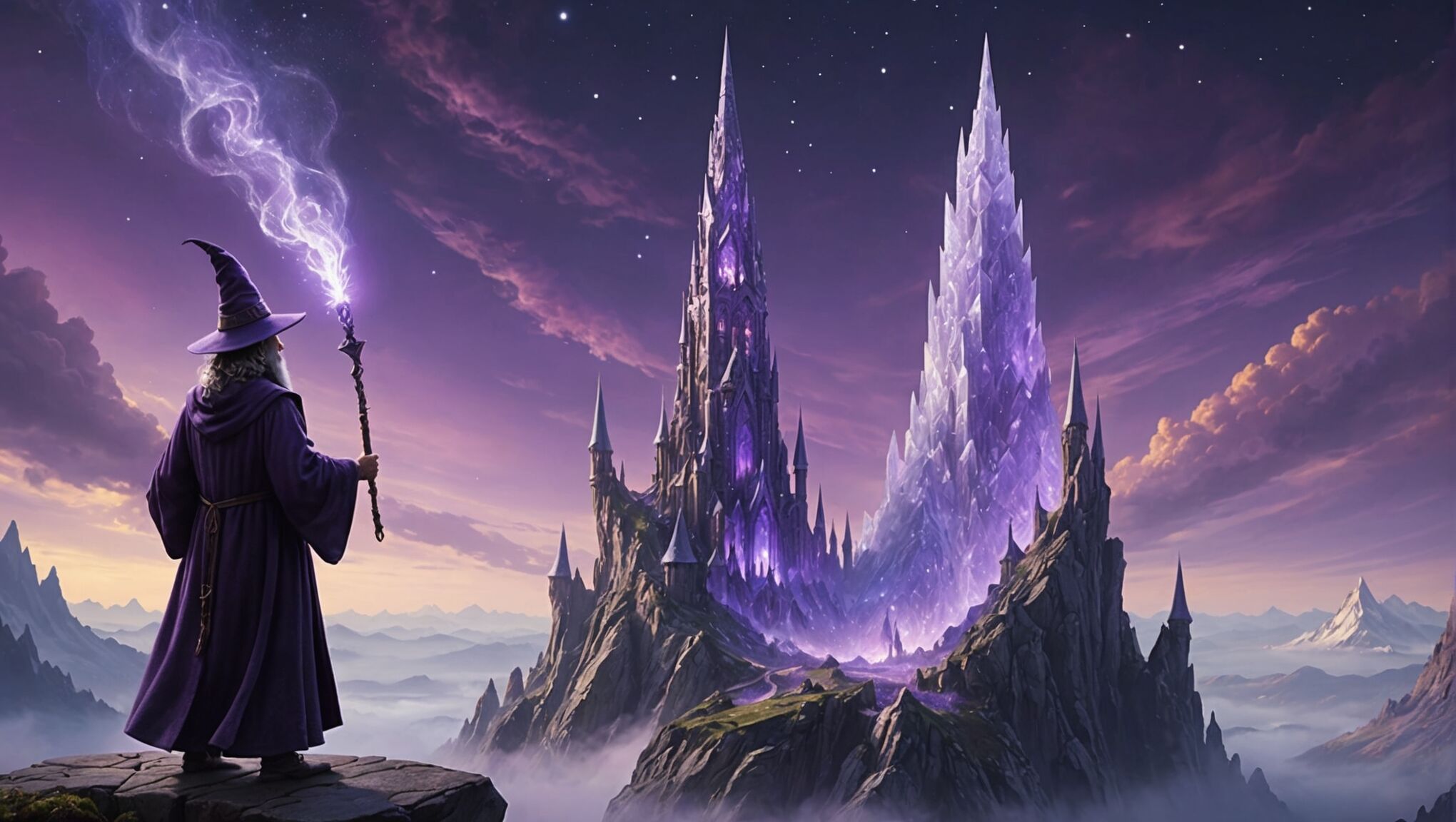blog
Creating a Sense of Scale in Fantasy Book Covers
Scale plays a crucial role in fantasy book cover design, serving as a powerful tool to captivate readers and convey the epic nature of the story within. By manipulating the relative sizes of objects and characters, artists can create a sense of grandeur, emphasizing the vastness of imaginary worlds or the monumental challenges faced by protagonists. “Scale is the silent storyteller in fantasy art,” as it can instantly communicate the magnitude of magical creatures, towering citadels, or sprawling landscapes. When properly executed, scale can evoke emotions ranging from awe to intimidation, drawing potential readers into the fantastical realm before they even open the book.
To effectively use scale in fantasy art, it’s essential to understand the psychological impact of size relationships. Humans naturally compare sizes to their own bodies, so including recognizable elements like human figures or familiar objects can provide a reference point for viewers. This contrast between the familiar and the extraordinary is what makes scale so impactful in fantasy illustrations. For instance, depicting a dragon that dwarfs an entire city immediately conveys its immense power and the epic scope of the narrative. Similarly, showing a lone adventurer standing before a colossal ancient ruin can evoke a sense of mystery and adventure, hinting at the grand journey that awaits within the pages.
Artists must also consider the balance between realism and fantastical exaggeration when working with scale. While fantasy allows for creative liberties, maintaining some level of plausibility can enhance the viewer’s ability to connect with the image. Proportional consistency is key, ensuring that even the most imaginative elements adhere to a logical size relationship within the composition. This attention to detail helps create a cohesive and believable fantasy world, one that invites readers to suspend their disbelief and immerse themselves in the story.
Choosing the right elements for scale
 When creating a fantasy book cover that effectively conveys a sense of scale, selecting the right elements is crucial. Artists must carefully choose objects, characters, and environments that not only represent the story but also provide clear size comparisons. Iconic fantasy elements such as dragons, castles, or magical artifacts can be powerful tools for establishing scale, especially when juxtaposed with more familiar objects or human figures.
When creating a fantasy book cover that effectively conveys a sense of scale, selecting the right elements is crucial. Artists must carefully choose objects, characters, and environments that not only represent the story but also provide clear size comparisons. Iconic fantasy elements such as dragons, castles, or magical artifacts can be powerful tools for establishing scale, especially when juxtaposed with more familiar objects or human figures.
“The most effective fantasy art often combines the familiar with the fantastic, allowing the viewer to grasp the scale of the impossible through comparison with the everyday.” – James Gurney, artist and author of “Dinotopia”
Consider incorporating recognizable elements from nature, such as trees, mountains, or bodies of water. These provide instant reference points for viewers, allowing them to gauge the size of other objects in the scene. For instance, a single towering tree dwarfed by an enormous crystalline spire immediately communicates the otherworldly scale of the fantasy setting.
Human figures are particularly effective in establishing scale. A solitary knight facing a colossal beast, or a group of adventurers gazing up at a floating city, can instantly convey the epic proportions of the fantasy world. These human elements not only provide a relatable size reference but also create an emotional connection with potential readers, who can imagine themselves in the characters’ shoes.
Architectural elements can also be powerful tools for scale. Ancient ruins, sprawling cityscapes, or impossibly tall towers can create a sense of history and grandeur. When combined with smaller, more detailed elements, these structures can emphasize the vastness of the fantasy world while also hinting at the intricate stories within.
Celestial bodies like moons, planets, or even fantastical cosmic phenomena can be used to create a sense of scale that extends beyond the terrestrial. A cover featuring a character or landscape with multiple moons or a looming gas giant in the sky immediately suggests a universe of epic proportions.
When selecting elements for scale, it’s important to consider their symbolic significance as well. A tiny magical amulet placed next to a massive dragon can suggest that even small objects can have immense power, adding depth to the visual narrative.
Lastly, negative space can be a powerful element in establishing scale. Vast empty areas surrounding a central figure or object can create a sense of isolation and emphasize the magnitude of the fantasy world or the challenges faced by the characters.
By carefully selecting and combining these elements, artists can create fantasy book covers that not only capture the imagination but also effectively communicate the epic scale of the stories they represent.
Incorporating atmospheric effects
 Atmospheric effects are a powerful tool in creating a sense of scale and depth in fantasy book cover art. By skillfully incorporating elements like mist, fog, haze, or even magical auras, artists can enhance the perception of distance and size, making fantastical scenes more immersive and awe-inspiring.
Atmospheric effects are a powerful tool in creating a sense of scale and depth in fantasy book cover art. By skillfully incorporating elements like mist, fog, haze, or even magical auras, artists can enhance the perception of distance and size, making fantastical scenes more immersive and awe-inspiring.
One of the most effective techniques is the use of aerial perspective, also known as atmospheric perspective. This natural phenomenon causes objects in the distance to appear lighter, less detailed, and bluer due to the scattering of light through the atmosphere. By mimicking this effect in fantasy art, artists can create a convincing illusion of vast distances, making mountains seem more towering or cities appear to stretch endlessly into the horizon.
Fog and mist can be particularly useful in creating a sense of mystery and scale. Partially obscuring elements of the scene can make them seem larger than life, leaving the viewer’s imagination to fill in the gaps. For instance, a dragon’s tail or wing emerging from thick fog can suggest an enormous creature without revealing its full size, heightening the sense of anticipation and wonder.
Design vintage-inspired fantasy covers. See more on our homepage.
Light plays a crucial role in atmospheric effects. The way light interacts with particles in the air can create dramatic scenes that emphasize scale. Crepuscular rays, also known as “god rays,” streaming through clouds or between colossal structures can give a sense of divine scale to a fantasy setting. Similarly, the glow of a distant magical city piercing through a misty valley can effectively convey both distance and the mystical nature of the world.
Color gradients in the sky can also contribute to the perception of scale. A sunset with vibrant colors fading into cooler tones towards the top of the image can create a sense of vast open space, making any elements in the foreground seem more imposing by comparison.
Magical effects unique to fantasy settings can be leveraged to create otherworldly atmospheric conditions. Swirling energies, ethereal glows, or even floating particles can all contribute to the sense of a world beyond our own, while simultaneously providing depth cues that enhance the perception of scale.
When incorporating atmospheric effects, it’s important to consider the mood and tone of the story. Dense, oppressive fog might be perfect for a dark fantasy tale, while soft, glowing mists could better suit a more whimsical or romantic fantasy narrative.
Artists should also be mindful of the balance between atmospheric effects and detail. While these effects can greatly enhance the sense of scale, overuse can obscure important elements of the cover art. The key is to use atmospheric effects strategically, revealing and concealing elements to guide the viewer’s eye and create a compelling visual narrative.
As you contemplate the use of atmospheric effects in fantasy book covers, consider how these techniques might be applied to other forms of visual storytelling. How might filmmakers or video game designers use similar principles to create immersive fantastical worlds? What can we learn from classical painters who mastered the art of atmospheric perspective long before the age of digital manipulation?
Reflect on how our perception of scale in the real world is influenced by atmospheric conditions. How does a foggy day change our sense of distance and size? By understanding and replicating these natural phenomena, artists can create fantasy worlds that feel both magical and grounded in a familiar reality.

